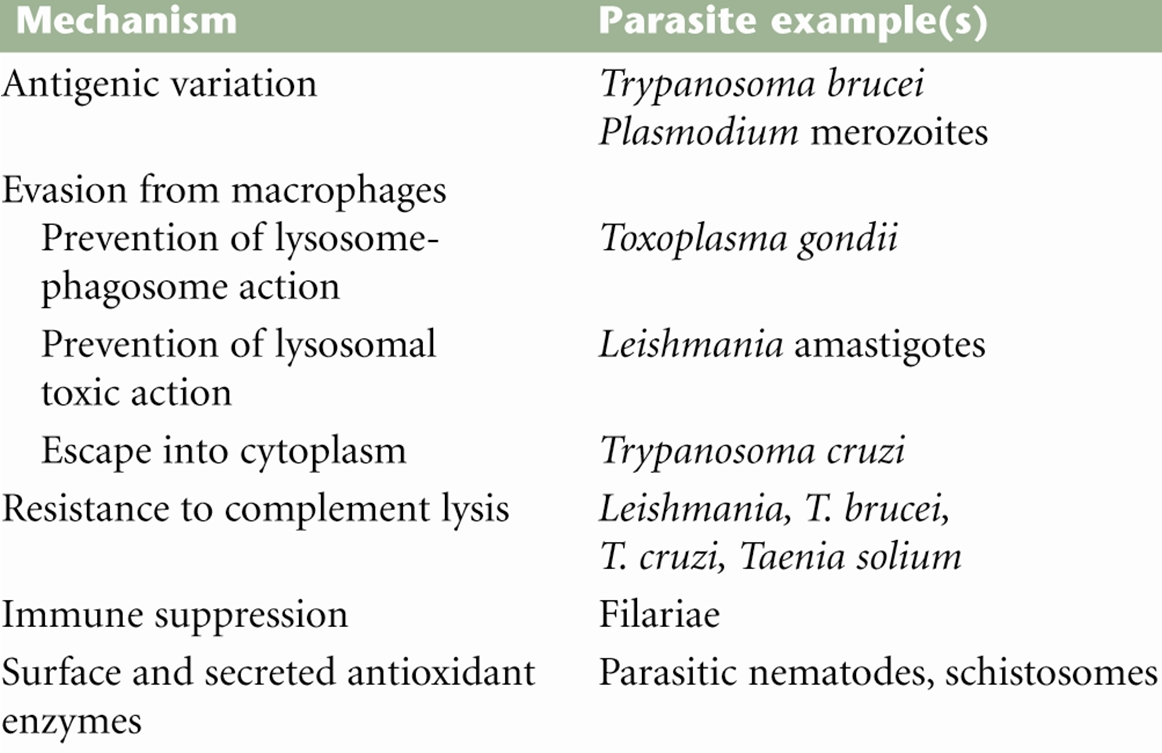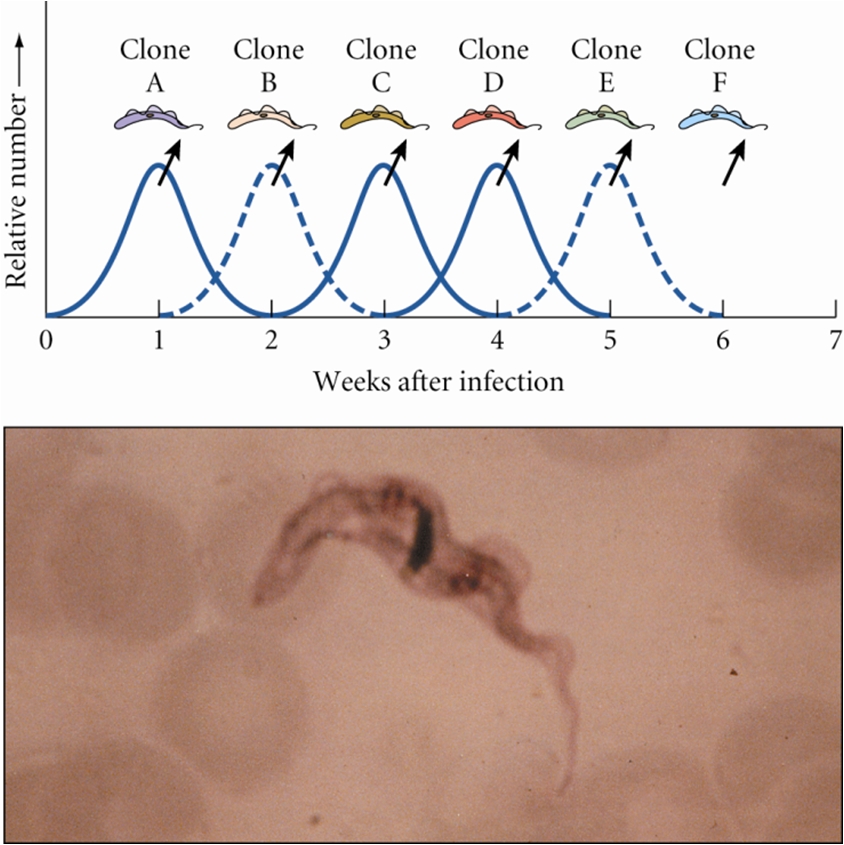|
Protozoan and Helminth Parasites
Contents Parasites have evolved sophisticated mechanisms to evade effective host immune response (see Immune Effectors). Table 2. Some mechanisms of parasite immune evasion.
(1) Seclusion from Immune System: Leishmania promastigotes activate complement and become taken up by macrophages. Normally, this would trigger respiratory burst in macrophages; however, the promastigotes fuse with the cell's lysosome and produce antioxidants and enzyme inhibitors to neutralize the effects of the toxins generated by the macrophage. Moreover, the larval stage of the muscle nematode trichinella transforms the muscle cell into a specialized nurse cell that protects it and provides nutrients. This parasitic worm survives there for the lifetime of the host. (2) Parasites Produce Antioxidant Enzymes: Activation of leukocytes produce hydrogen peroxide (H2O2), superoxide ions, and hydroxy radicals (OH-) which are toxic to parasites. Parasites have their own oxygen-scavenging enzymes to protect themselves from host attack. These include the enzymes: superoxide dismutase, catalase, and glutathione peroxidase. All helminth and protozoan parasites examined to date have at least on of these enzymes. (3) Interfering with Complement: Leishmania is completely covered with lipophosphoglycan.
(4) Antigenic Variation: Trypanosoma brucei coats itself with a dense protein that comprises of a single antigen called variant surface glucoprotein (VSG). The amount of parasites eventually declines when the host antibodies recognize this VSG (Figure 6). However, parasites that have replicated have new VSG, so the old immune response is no longer effective. Figure 6. Antigenic variation in African trypanosomes. The photo is a blood smear showing a trypanosome. Click to enlarge.
The following is a list of parasites that have been profiled: |
click the animation to read more about the featured organism
|



